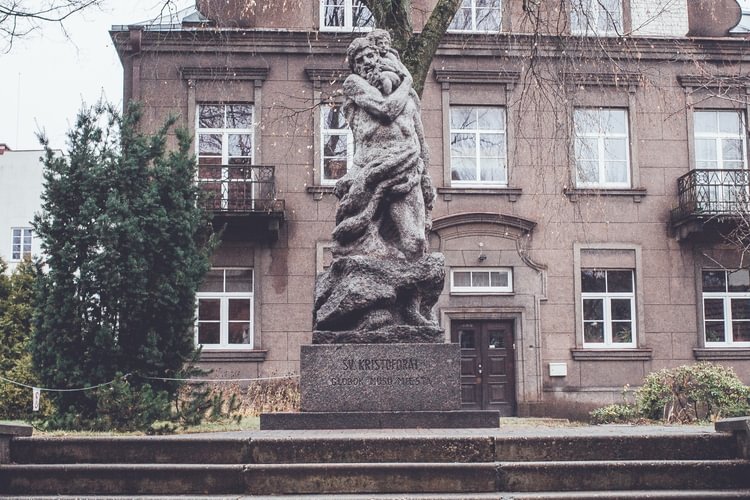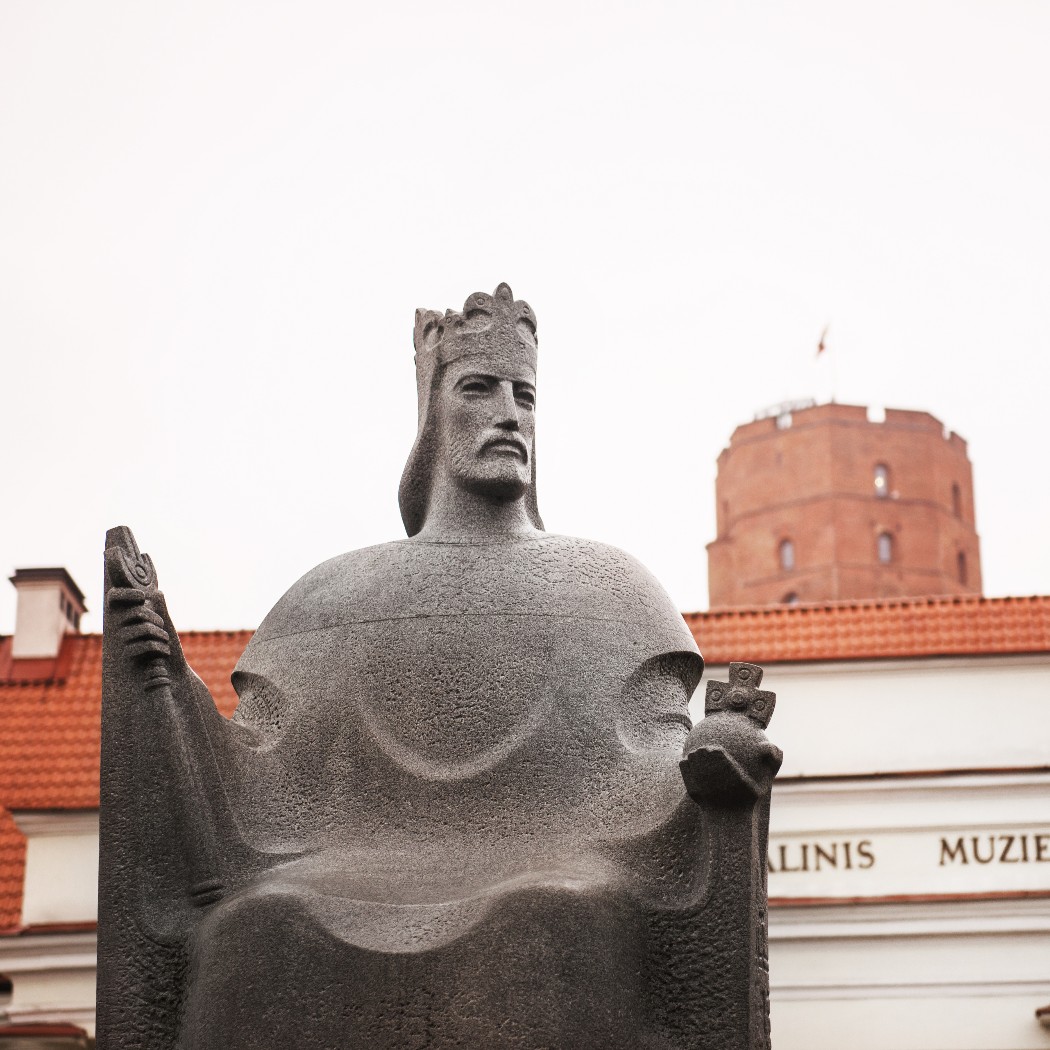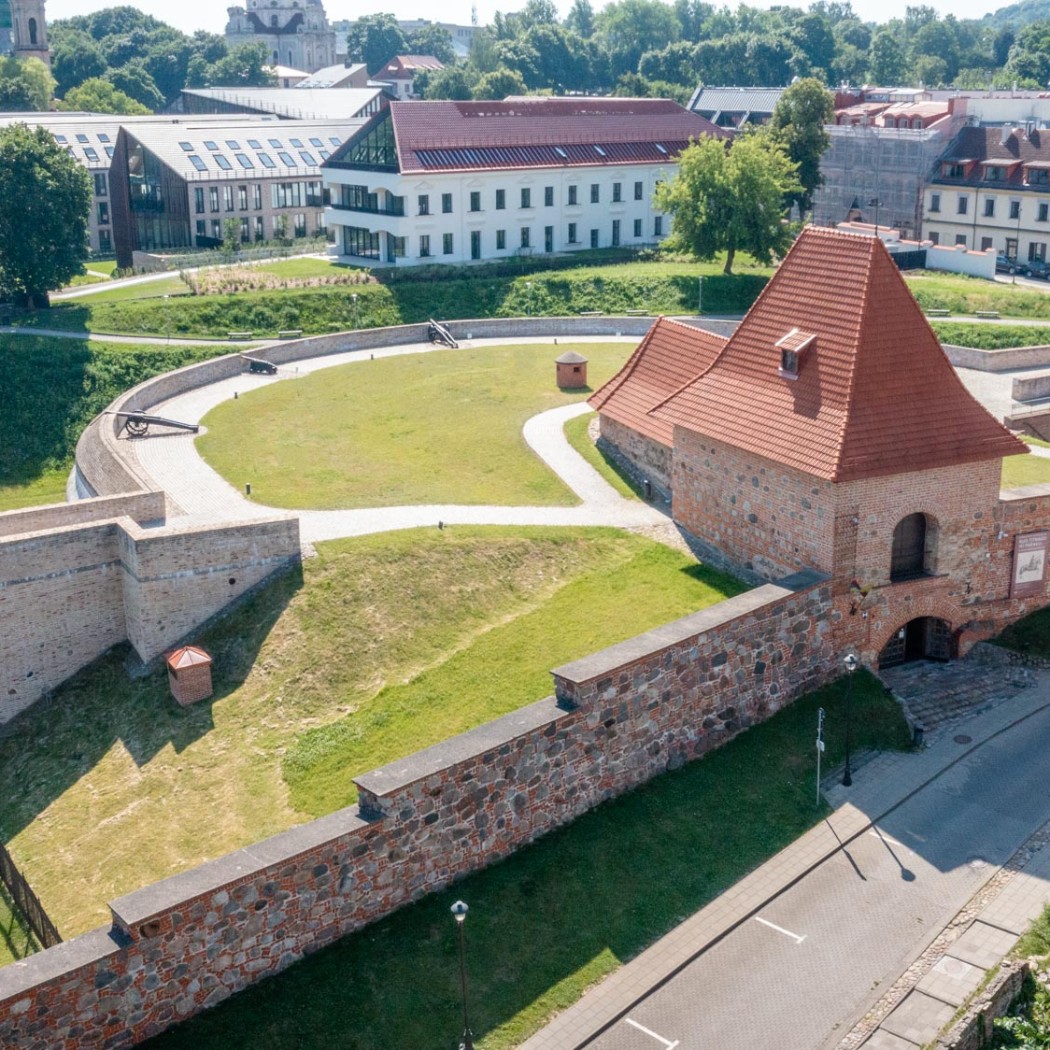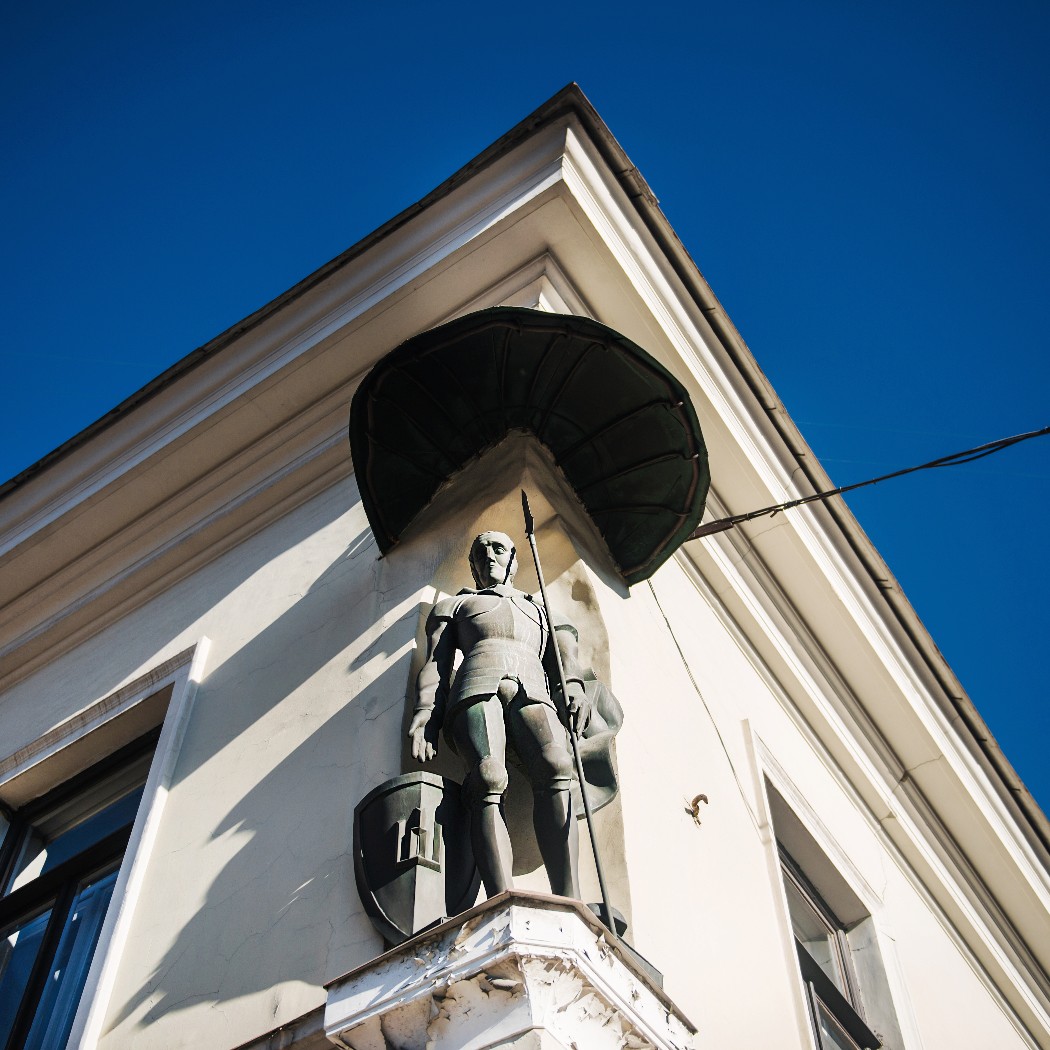Statue of Saint Christopher

In short
The artist behind this statue, Antanas Kmieliauskas, studied at a time when religion-related creative work could cost one’s freedom. The sculptor was able to make this statue but he still had to pay: he was excluded from the Artists' Union.
Despite this prohibition, the artist accepted an order from the Church of St. Nicholas to create a monument in memory of a former priest named Kristupas Čibiras, who fought for the Lithuanian cause in interwar Vilnius. The sculpture remained a peculiar centre of Lithuanian freedom of thought and faith during the Soviet occupation.
While studying monumental art, the artist spent a great deal of time analysing human anatomy as well as Greek and Renaissance classical art, and was already known as a talented painter. Therefore, he didin't even need to use sketches for St. Christopher's sculpture.
The sculpture, which is located near the Church of St. Nicholas, on St. Mikalojus Street, has a complex composition: the artist depicted the movement of a hero as if he was taking a decisive step across the flow of a fighting river.
Brief History
The granite statue of Saint Christopher is dedicated to Kristupas Čibiras, a priest and activist of pre-war culture, who died near the church during the war.
This monument was supposed to be placed near the tomb of K. Čibiras in the Rasai Cemetery, but as permission was not granted for this location, the sculpture was erected in the churchyard. It depicts St. Christopher, the patron of Vilnius, carrying a baby Jesus across the river. According to the sculptor, St. Christopher is depicted as if walking upwind. During the Soviet era, the sculptor created an allegory of free Lithuania. At the time, it was an obvious act of resistance, as the coat of arms of Vilnius was forbidden because it features the figure of St. Christopher. The artist was excluded from the Artists' Union due to his work on this monument.
Legend has it that Christopher wanted to serve the lord and was looking for him everywhere. Finally, Christopher was told that if he served Christ by carrying passengers across the rapid, flooding river, then perhaps Christ would appear to him. Christopher did so, and one night a little boy awoke him, asking to be carried across the river. Christopher put the boy on his shoulders and began to wade into the river. There was a storm, the child grew heavier and heavier, and they almost drowned. After finally carrying the child across and placing him on the ground, Christopher asked the boy’s name. The boy claimed to be Christ, carrying the hardships of the entire world in his hands.



